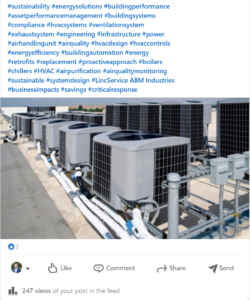
OPTIMIZED START/STOP, AKA: “OSS” | When a space goes from unoccupied to occupied, the mechanical equipment has to bring the space temperature to setpoint. The time it takes to do this is called “recovery time”.
OPTIMAL START: The principal idea behind implementing “OSS” is to try and predict what a space’s recovery time will be and shift the scheduled start time of that piece of equipment by the space’s recovery time. The reason this is considered “optimal” is because it takes the guess work out of the schedule and ensures that, by the time the space is occupied by people, it is comfortable by starting at exactly the right moment ahead of scheduled start to utilize only the energy that’s needed to bring the space temperature to setpoint.
OPTIMAL STOP: Conversely, optimal stop uses the same concept but looks at how long it takes a space to drift away from setpoint and stop it ahead of scheduled stop time to allow the temperatures to drift as occupants leave the building. The idea is to stop the units early enough to save some energy and take advantage of the building’s insulation.
According to the U.S. Department of Energy (DOE), about 30% of the energy used in commercial properties goes to waste. To increase sustainability and decrease operating costs, businesses must reduce the amount of energy wasted from powering HVAC systems and equipment. The heating, ventilation and air conditioning (HVAC) systems used in commercial buildings are highly energy-intensive.

